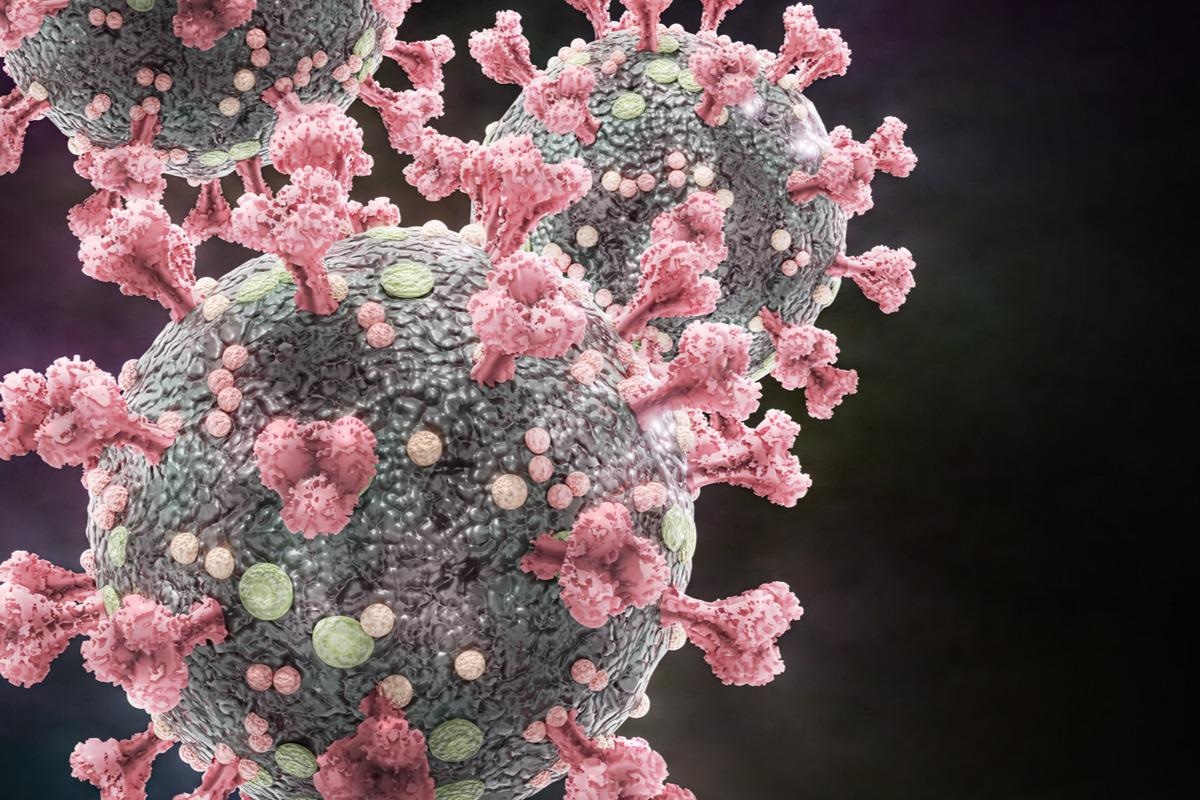In a recent study posted to the International Journal of Molecular Sciences (IJMS), researchers presented new structural insights about the severe acute respiratory syndrome coronavirus 2 (SARS-CoV-2) membrane (M) protein.
 Study: SARS-CoV-2 Membrane Protein: From Genomic Data to Structural New Insights. Image Credit: Dotted Yeti/Shutterstock
Study: SARS-CoV-2 Membrane Protein: From Genomic Data to Structural New Insights. Image Credit: Dotted Yeti/Shutterstock
Background
To date, the SARS-CoV-2-driven coronavirus disease 2019 (COVID-19) pandemic has affected over 459 million people and resulted in more than 6 million deaths globally. SARS-CoV-2 is made up of four structural proteins: element (E), nucleocapsid (N), M, and spike (S). It also has various non-structural proteins.
M protein is the amplest structural protein in SARS-CoV-2 and plays an important role during the viral infection process and host interferon resistance. Understanding the structure-function connection of the M protein dimer was critical since it serves multiple crucial tasks during the life cycle of SARS-CoV-2. Moreover, SARS-CoV-2's M protein is a highly conserved viral protein, making it a promising target for new COVID-19 drug development.
About the study
In the current study, the scientists explored the structural nature of the SARS-CoV-2 M protein homodimer. To accomplish so, the team devised and applied a thorough and reliable in silico approach to estimate the dimeric structure of M proteins, interface characterization, and membrane orientation.
The researchers created three-dimensional (3D) models of the SARS-CoV-2 M protein monomer and dimer structures, together with estimates for their homodimeric interface and membrane orientation. They also projected the effect of mutations at the expected homodimeric interface and the optimal site for novel drug/peptide binding, providing the possibility for the development of new therapeutic approaches based on the SARS-CoV-2 M protein structure. Molecular dynamics (MD) simulations were applied to AlphaFold projected M protein structure due to the unavailability of an M-protein experimental structure.
Single nucleotide polymorphisms (SNPs) in SARS-CoV-2 M protein were collected from the Global Initiative on Sharing All Influenza Data (GISAID) database, which contains over 1.2 million SARS-CoV-2 proteins and genomes. Changes in binding free energy were calculated for dimer interfacial SNPs to estimate mutant protein stabilities.
Results
The results show that the SARS-CoV-2 TMHMM M protein monomer membrane orientation projection exhibited low root-mean-square deviation (RMSD) values and more stability compared to the primary structure of AlphaFold. The SARS-CoV-2 TMHMM M protein monomer membrane orientation projection also did not show any significant conformational alterations. Thus, it was chosen for further evaluation following MD equilibration and minimization.
The overall conformation of the present SARS-CoV-2 M protein equilibrated model structure was similar to the predicted structures. Yet, significant variations were observed at TMH1 and TMH2, especially in the linearity and length of TMH1. These inferences strengthen the current model 3D structure.
F96-F96, L93-P59, and W92-W92 interactions were found to be important in the stabilization of the M protein dimer. In addition, M109, F103, L93, I82, W75, Y71, V70, A69, V66, and W55 were crucial residues to analyze and authenticate since they were present in many interactions across the MD simulations. The SARS-CoV-2 M protein dimer structural configuration reported in this research was comparable to the open conformation previously proposed.
The authors identified 91 unique SNPs in the M protein positioned at the anticipated dimer interface from the SARS-CoV-2 M protein's SNP data procured from GISAID. Of these mutations, while those with ∆∆Gbinding values greater than 0.50 kcal/mol had a negative effect on the stability of the M protein dimer, those below -0.50 kcal/mol exhibited a positive effect on the M protein dimer stability. The majority of the mutations' ∆∆Gbinding values were beneath -0.50 kcal/mol and did not impact the M protein dimer interfacial stabilization.
Over 99% of the non-polar to polar SNPs in the current study had negative ∆∆Gbinding values, supporting the increased stability of the M protein dimer hypothesized by the authors. Mutations in P59, W92, L93, and F96 homologous SARS-CoV experimentally interacting residues were scarce and had ∆∆Gbinding values near zero. L93S and W92Q, on the other hand, had Gbinding values less than -0.5 kcal/mol, implying that these residues were crucial for M protein dimer contacts. Further, L93P exhibited a ∆∆Gbinding value of 2.29 kcal/mol, possibly due to Proline-induced destabilization in the TMH3 α-helix.
Among the 91 M protein SNPs, the SARS-CoV-2 variant of interest (VOI) and the variant of concern (VOC) SNPs were identified. A few high-prevalent mutant residues such as GR, G, GH, and GRY clades were identified to be particularly important in SARS-CoV-2 VOIs and VOCs.
Conclusions
The authors of the present work were able to examine mutation impacts at the SARS-CoV-2 M protein homodimer interface by developing a thorough and well-detailed computational workflow. They also were able to comprehend the particularities of this region's behavior and determine the ramifications for dimer stability. According to the authors, this was the first time (experimentally and computationally) the SARS-CoV-2 M protein dimer's structure, contacts, and mutational implications were hypothesized and thoroughly investigated.
Overall, the SARS-CoV-2 M protein is highly conserved, indicating that crucial residues F112, S111, F96, S108, and F103 are maintained and capable of forming critical dimer contacts. These residues could now be evaluated as areas of interest for novel SARS-CoV-2 treatment options. The insights provided by the current study might be a game-changer in the development of novel SARS-CoV-2 treatments based on the M protein structure.